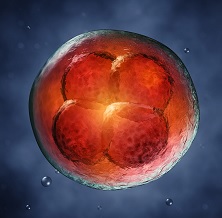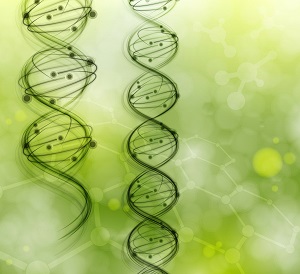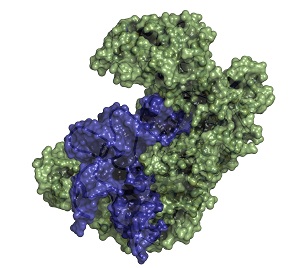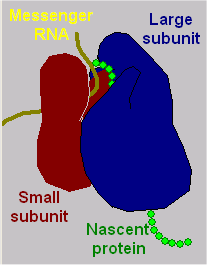29 Oct DNA and Biocomplexity
Bio-Complexity
 Before I can feel comfortable designing a machine or software that can perform brain-like tasks, I want to understand the brain and the broader context in which it develops and operates. The last thing I want to do is over-simplify my assumptions and fail in my design. Nor do I want to over-complexify. I don’t feel I need to know everything before I start, but I need to know the structure and behaviors that characterize the equipment I am trying to copy.
Before I can feel comfortable designing a machine or software that can perform brain-like tasks, I want to understand the brain and the broader context in which it develops and operates. The last thing I want to do is over-simplify my assumptions and fail in my design. Nor do I want to over-complexify. I don’t feel I need to know everything before I start, but I need to know the structure and behaviors that characterize the equipment I am trying to copy.
Cells in all living organisms are extremely complex. This is especially true of human cells such as neurons. A classic example of a complex cell in a human is the zygote. Within the tiny perimeter of a single human reproductive cell lies half of the information necessary to build another human and catalyze her growth into a potentially perfect physical organism (perfect meaning complete: all her myriad components can form and function together correctly – not necessarily perfect in the sense of developing a physicist’s brain or a fashion model’s or athlete’s body).
 This zygote, in combination with one more single reproductive cell, is one part of a vast information system responsible for the maintenance of data that completely describes the physical nature of humanity.
This zygote, in combination with one more single reproductive cell, is one part of a vast information system responsible for the maintenance of data that completely describes the physical nature of humanity.
Reproduction involves a biological information system in which DNA plays a key role. In combination with other components of the zygote, notably the filaments that appear to play a major role in mitosis or cell division, DNA governs the synthesis of organisms through cell differentiation. After a brief detour to DNA, this section of the blog will turn to the examination of neurons: collections of cells in the complex and intricate information system that is the human brain. Then we will proceed to look at the internal workings of the individual cells for clues that will help in our system engineering and design.
| Understanding Context Cross-Reference |
|---|
| Click on these Links to other posts and glossary/bibliography references |
|
|
|
Genetic Information
 In some ways, the genetic information contained in DNA and RNA can be considered analogous to what we call knowledge. RNA is part of our knowledge if our genetic inheritance includes–in addition to the ability to learn–actual templates for knowledge (as proposed by innatists such as Plato and Descartes). Genetic information storage may yield clues to help us understand our general knowledge storage mechanisms. If mechanisms or structures similar to chromosomes and ribosomes accomplish the data storage and access tasks of cognition, then mapping knowledge would be directly analogous to mapping the human genome. (Note: in some illustrations in my posts, ribosomes are not specifically identified, though they are represented in their attached state with rough ER or endoplasmic reticulum.)
In some ways, the genetic information contained in DNA and RNA can be considered analogous to what we call knowledge. RNA is part of our knowledge if our genetic inheritance includes–in addition to the ability to learn–actual templates for knowledge (as proposed by innatists such as Plato and Descartes). Genetic information storage may yield clues to help us understand our general knowledge storage mechanisms. If mechanisms or structures similar to chromosomes and ribosomes accomplish the data storage and access tasks of cognition, then mapping knowledge would be directly analogous to mapping the human genome. (Note: in some illustrations in my posts, ribosomes are not specifically identified, though they are represented in their attached state with rough ER or endoplasmic reticulum.)
There are structures in every neuron called microtubules that resemble the coiled helices of DNA. It is possible that these play a role in sensory processing, memory, and cognition. These structures are found in the cytoskeleton, described in another post.
Bio-Data Sources
 Modern biological science has shown that DNA stores and provides the information necessary for cell division or mitosis. This cell division is the fundamental process of development in all organisms. DNA chains, though only a small component of the cell, provide information for cell differentiation. These, in turn, govern the formation of the tissues, organs, and systems that enable all complex organisms to develop. The DNA factory, the ribosome (pictured here) is an information itself.
Modern biological science has shown that DNA stores and provides the information necessary for cell division or mitosis. This cell division is the fundamental process of development in all organisms. DNA chains, though only a small component of the cell, provide information for cell differentiation. These, in turn, govern the formation of the tissues, organs, and systems that enable all complex organisms to develop. The DNA factory, the ribosome (pictured here) is an information itself.
The discovery and study of DNA has been extraordinarily revealing. The knowledge gained from DNA research has been invaluable to cognitive modeling and other scientific efforts. As we move further into this information-oriented age, the study of human and other biological information-processing mechanisms is becoming more important. Naturally, as we learn more about the efficiency of biological mechanisms, we want to imitate them. Recent imitative efforts have focused on the elegant mechanisms of heredity or genetic information transmission. The next two pages show examples of how complex this information is and how it is used.
Our interest in biological information storage and processing devices other than the brain is germane to the subject of cybernetics. Although DNA is not directly involved in human cognition, the mechanisms of information storage in DNA may serve as clues to other information storage and processing devices in the brain.

DNA Structure
Along with adenine and cytosine, quanine and thymine act as bases for DNA double helical chains. In RNA uracil replaces thymine and ribose replaces deoxyribose. Go to this YouTube Protein Synthesis Animation Video to see protein synthesis. PLease also click here to see how DNA and RNA work together to take the information in the DNA and produce proteins – the building block of life. All we know about biocomplexity demands a complex model for mimicking the processes that characterize the human organism.
Ribosomes
 Ribosomes are often described as macromolecules because of their small size and the great quantity of them in cells. These complex units carry ribonucleic acid (RNA). In addition to RNA, they are made up of protein molecules with a large subunit (blue on the illustration) and a small subunit (red on the illustration). Their mass is on the order of several million daltons. Each subunit has a function associated with protein synthesis. Ribosomes occur both as free particles in the cytoplasm and as particles attached to the ER membrane. They contain 40 to 60 percent of the RNA found within cells. Their complexity derives from the large number of different proteins (20 or more) associated with them; at roughly 200 angstroms, they are extremely small.
Ribosomes are often described as macromolecules because of their small size and the great quantity of them in cells. These complex units carry ribonucleic acid (RNA). In addition to RNA, they are made up of protein molecules with a large subunit (blue on the illustration) and a small subunit (red on the illustration). Their mass is on the order of several million daltons. Each subunit has a function associated with protein synthesis. Ribosomes occur both as free particles in the cytoplasm and as particles attached to the ER membrane. They contain 40 to 60 percent of the RNA found within cells. Their complexity derives from the large number of different proteins (20 or more) associated with them; at roughly 200 angstroms, they are extremely small.
RNA contains genetic information needed to synthesize proteins for the manufacture of cell components. Strands of RNA messengers pass through the folds of the ribosome, providing a template for the protein that needs to be built for a new cell component or for mitosis (to create a new cell). The RNA’s template is obtained through transcription with a portion of a DNA chain. The illustration at right shows a simplified view of RNA and Protein Synthesis.
It is a huge stretch to compare the functions of ribosomes to the process of understanding human communication. But I think it is no stretch at all to examine processes such as template transcription and neurite growth to look inside cells for clues on how to design systems that more closely approximate human cognitive capabilities. Just as RNA transcription in a cell can produce hundreds of new proteins in a second, electrical activity in the brain can prompt floods of ideas and memories. It is my intent in this blog, to find what parallels may exist and show how they bespeak a distributed, massively parallel model of complex elements and processes to account for such floods of meaning.
| Click below to look in each Understanding Context section |
|---|








